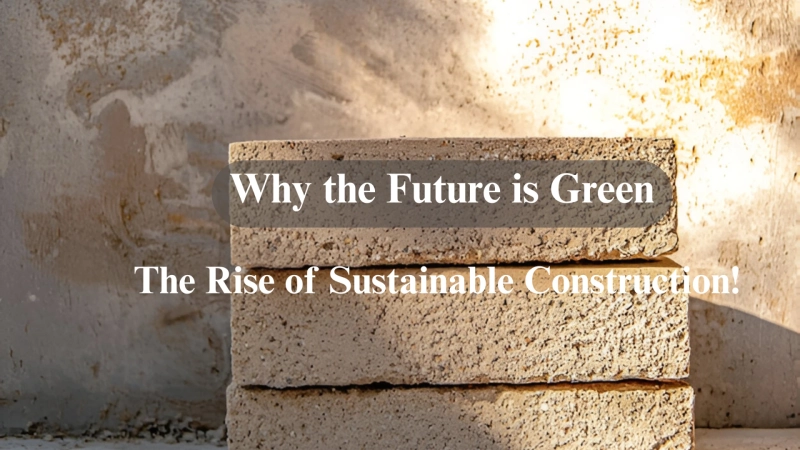Imagine buildings that not only provide shelter but actively contribute to a healthier environment—absorbing carbon, reducing waste, and enhancing energy efficiency. This vision is no longer a distant possibility but a growing reality, thanks to sustainable construction.
As climate change continues to pose significant challenges, the construction industry is evolving. Traditional building materials, such as concrete, contribute nearly 8% of global CO₂ emissions, while deforestation and excessive waste further strain the planet’s resources. The solution? A shift toward eco-friendly materials, energy-efficient designs, and waste-reducing technologies. Among these innovations, Hempcrete is emerging as a frontrunner.
Why Sustainable Construction Is Essential?
The demand for sustainable building practices is not just a trend—it’s a necessity. Conventional construction methods come with environmental and economic drawbacks, including high energy consumption, pollution, and inefficient insulation. Sustainable alternatives, on the other hand, offer numerous advantages:
- Lower Carbon Footprint – Reducing CO₂ emissions and environmental impact.
- Improved Energy Efficiency – Smarter insulation and natural climate control.
- Use of Renewable Materials – Incorporating biodegradable and recyclable components.
- Minimized Construction Waste – Efficient resource use and reduced landfill overflow.
- Healthier Living Spaces – Improved indoor air quality and mold resistance.
Leading this green revolution is a material that’s proving to be both innovative and highly effective—Hempcrete.
Hempcrete: A Game-Changer in Sustainable Construction
Hempcrete, a bio-composite material made from hemp hurds, lime, and water, is rapidly gaining attention for its carbon-negative properties and superior insulation. Unlike traditional concrete, which contributes significantly to greenhouse gas emissions, Hempcrete actively absorbs CO₂ over its lifetime, making it a sustainable and environmentally responsible choice.
Key Benefits of Hempcrete:
- Fire and Pest Resistance – Naturally resilient and long-lasting
- Exceptional Insulation – Regulates indoor temperatures efficiently
- Humidity Control – Prevents mold and enhances air quality.
- Lightweight and Versatile – Easier handling and construction
Beyond Hempcrete: Other Sustainable Building Materials
While Hempcrete is making significant strides, other eco-friendly materials are also contributing to the shift toward sustainable construction:
- Bamboo – A rapidly renewable alternative to traditional timber.
- Mycelium Bricks – Biodegradable, durable, and made from fungal networks.
- Recycled Steel – Reduces industrial waste while maintaining structural strength.
- Straw Bale Insulation – A natural, highly effective thermal barrier
The Future of Sustainable Construction
With increasing government incentives, technological advancements, and growing industry awareness, the global green construction market is projected to reach $774 billion by 2030. Innovations like pre-fabricated Hempcrete panels are making sustainable buildings more accessible and cost-effective.
The future of construction is not just about reducing environmental harm—it’s about creating smarter, healthier, and more resilient structures. Whether you are a builder, architect, or homeowner, embracing sustainable materials like Hempcrete is a step toward a greener future.
Final Thoughts: Time to Build Sustainably
The transition to sustainable construction is no longer optional—it’s an imperative shift toward a more responsible and efficient built environment. As the industry moves forward, materials like Hempcrete will play a crucial role in shaping the future of architecture and construction.
Want to learn more? Read our comprehensive guide on Hempcrete here.
Together, we can build a more sustainable, eco-friendly world!


